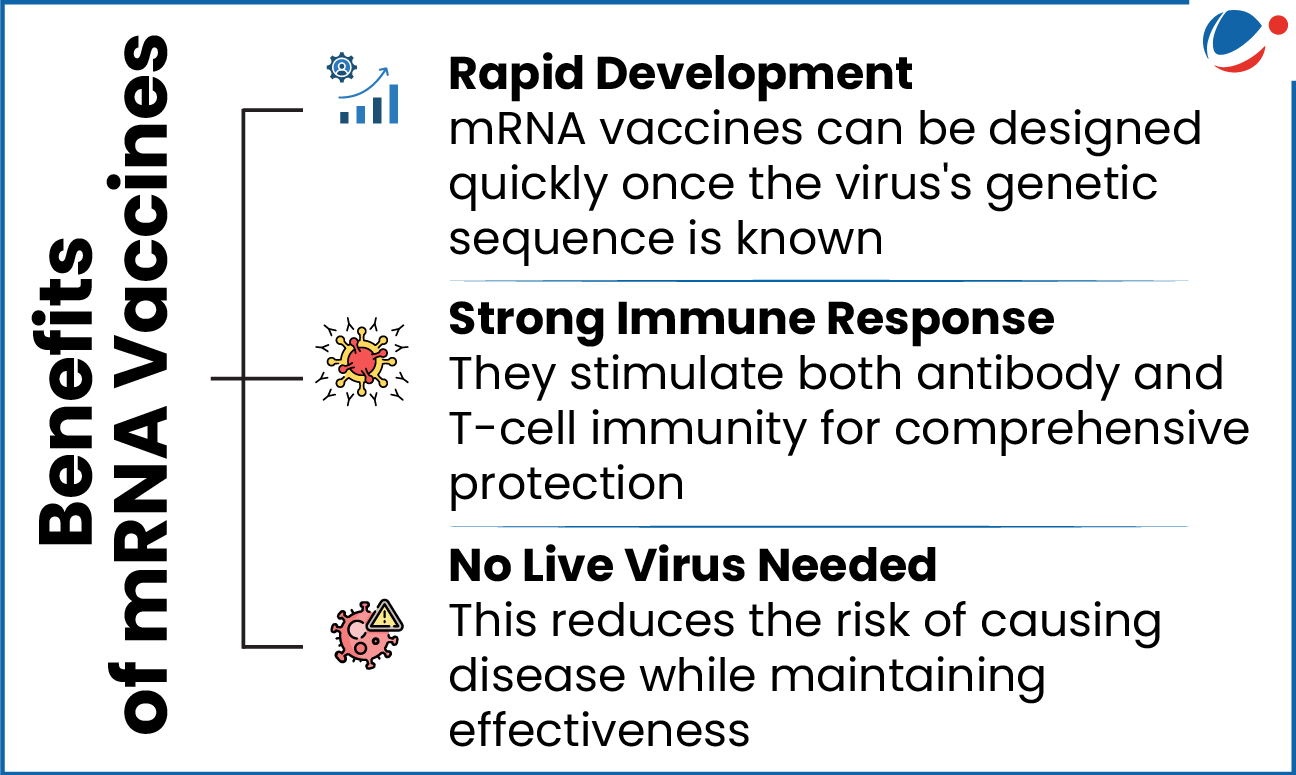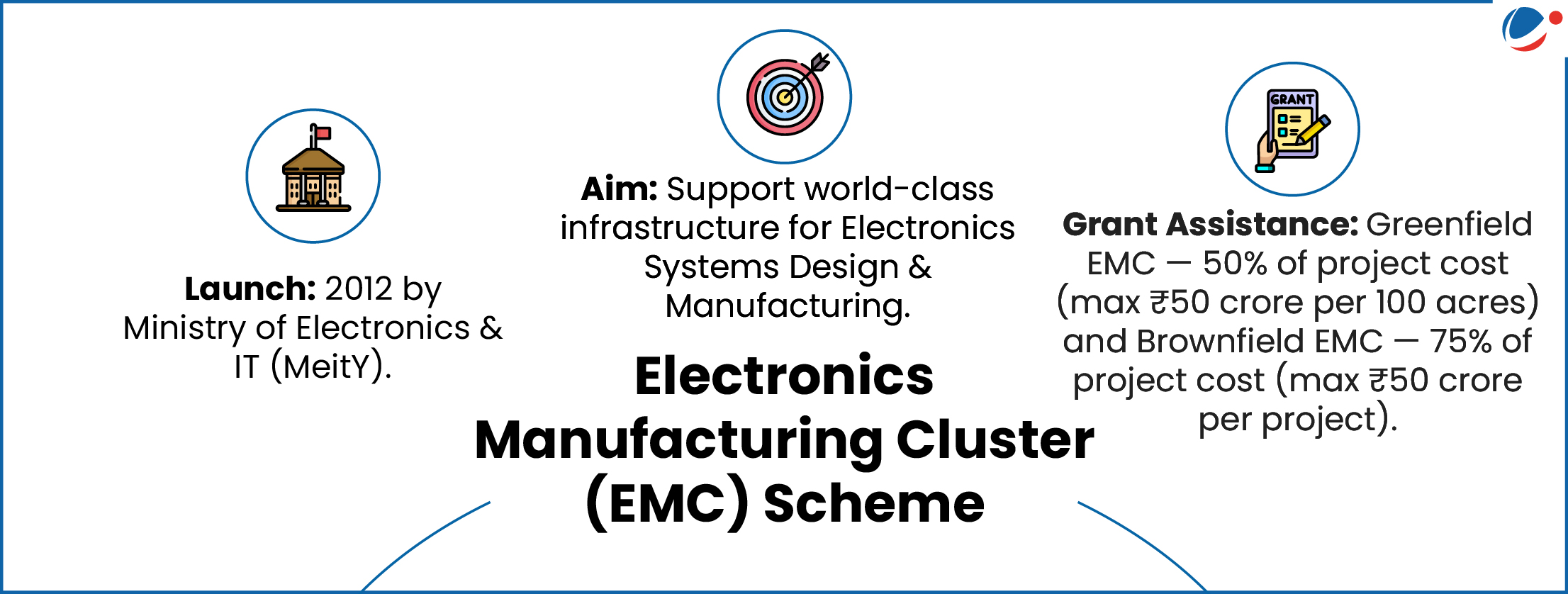Oncolytic & Personalized mRNA Vaccines
Russia is developing oncolytic vaccine Enteromix and Personalized mRNA cancer vaccines for cancer treatment.
About oncolytic vaccine Enteromix
- Oncolytic vaccines are a type of cancer therapy that uses oncolytic viruses (OVs) to directly kill cancer cells and stimulate an anti-tumor immune response.
- Enteromix is based on a combination of four non-pathogenic viruses that have the ability to destroy malignant cells and simultaneously activate the patient's antitumor immunity.
- Vaccine showed 100% success in preclinical trials.
- Initial target of vaccine is colorectal cancer, Moreover, promising progress has been made in developing vaccines for glioblastoma and specific types of melanoma.

About Personalized mRNA Vaccines
- Personalized Vaccine: Based on the genetic analysis of each patient's tumor, a unique vaccine is created that can "teach" the immune system to recognize cancer cells.
- mRNA vaccines are a type of vaccine that use a small piece of messenger RNA (mRNA) to instruct our cells to produce a protein specific to a virus.
- mRNA delivers genetic material, encapsulated in lipid nanoparticles, into body to prompt protein production that match up with parts of pathogen called antigens.
- E.g., the mRNA vaccine for COVID-19 directed cells to produce copies of a protein on the outside of the coronavirus known as the spike protein.
- Immune system sees these foreign antigens as invaders, dispatching defenders called antibodies and T-cells and training immune system for potential future attacks.
Challenges of mRNA vaccines:
- Storage requirements: Require ultra-cold storage, making distribution difficult.
- Short-term side effects: E.g. fever, fatigue, and soreness at the injection site.
- Long-term safety: mRNA vaccines are relatively new, so long-term effects are still being studied.
- Tags :
- mRNA Vaccine
- Enteromix
- oncolytic vaccine
World’s Largest Neutrino Detector Activated
The detector, known as the Jiangmen Underground Neutrino Observatory, or JUNO, is located in China.
- The observatory is situated 700 meters underground.
- Most of the neutrino observatories are underground, as the physical bulk of the Earth’s crust helps block most other interfering particles, like muons (elementary subatomic particles similar to the electron).
- Main goals of the JUNO
- Mass Hierarchy: To determine the hierarchy of masses between the three neutrino types.
- The three neutrino types are Electron neutrino, Muon neutrino, and Tau neutrino, each linked to their respective particles.
- Oscillation Frequency: To measure the frequency of neutrino oscillation (how often the neutrino types shift, or change, from one type to another).
- Mass Hierarchy: To determine the hierarchy of masses between the three neutrino types.
About Neutrinos
- Nature: Subatomic particles (often called ghost particles) that have zero electrical charge, zero size and tiny mass.
- Occurrence: Second-most abundant particle after photons (particles of light) and most abundant among particles found in the universe.
- Detectability: Difficult to detect as they only interact with matter via weak nuclear force and gravity.
- Features: Undisturbed by even the strongest magnetic field, Travel in straight lines from their source, Travel at nearly the speed of light, etc.

- Tags :
- Neutrino Detector
Extreme Nuclear Transients (ENTs)
Astronomers identified a new category of events: Extreme Nuclear Transients (ENTs).
About ENTs
- ENTs occur when stars with masses at least three times greater than that of the sun are torn apart by supermassive black holes.
- As a star nears a black hole’s event horizon, extreme tidal forces stretch and compress the star into a long, thin spaghetti-like shape, releasing enormous amounts of electromagnetic energy. This emission is the ENT.
- Tags :
- Extreme Nuclear Transients (ENTs)
Quasi-Moon
Astronomers have identified a tiny quasi-moon, 2025 PN7, orbiting near Earth for about 60 years.
About Quasi-Moon (a.k.a. Quasi-satellite)
- A quasi-moon is a celestial body that:
- Orbits the Sun, appearing to travel with a planet due to a synchronized orbit.
- Primarily influenced by the sun's gravity, not the planet.
- Is not a true moon, as it does not directly orbit the planet.
- Astronomers have previously identified around 6 known quasi-moons of Earth.
- Tags :
- Quasi-Moon
- 2025 PN7
India’s Largest Lithium-ion (Li-ion) Battery Manufacturing Plant
India’s Largest Lithium-ion (Li-ion) Battery Manufacturing Plant was inaugurated in Haryana.
- When fully complete, it will produce about 20 crore battery packs every year, covering nearly 40% of India’s annual requirement of 50 crore packs.
- It was established under the Centre's Electronics Manufacturing Cluster (EMC) scheme.
About Li-ion Battery
- It is a type of rechargeable battery where lithium ions move between a negative electrode (graphite) and a positive electrode (Li transitional metal oxides) through a non-aqueous electrolyte during charging and discharging.
Benefits of Lithium-ion Batteries
- High energy density: At 75-200 Watt-hours /KG, stores more energy compactly, and offers longer cycles between charges.
- Lightweight and Lower Toxic Heavy Metals: Compared to older lead-acid batteries, it is much lighter due to use of less toxic and lightweight Li and carbon electrodes.
- Excellent performance: They provide good cycle stability, efficiency, and reliability, with low self-discharge and generally no memory effect (slow-down due to repeated charging).
Challenges
- Supply Chain Vulnerability: E.g. China controls half of global Li production and 70% of Li-ion battery production.
- India imported Li-ion batteries worth US$ 1.2 billion (2018-2022).
- Safety hazards: They contain a flammable electrolyte, which can lead to explosions if manhandled.
- Environmental impact: E.g., Lithium mining is water-intensive (Apprx. 2,000 tonnes per tonne of lithium).
- Lack of Recycling Units exacerbates the issue of safe disposal.

- Tags :
- Li-ion Battery
- Li-ion
Articles Sources
Hierarchical reasoning model (HRM)
Sapient’s scientists have developed a new AI modeled on the human brain. Current Large Language Models (LLMs) like ChatGPT have certain limitations due to use of Chain-of-Thought (CoT) reasoning.
About Hierarchical Reasoning Model (HRM)
- Modelled on: Human brain’s hierarchical, multi-time scale processing.
- Mimics how different brain regions integrate information across durations.
- Tags :
- Hierarchical reasoning model (HRM)
- Chain-of-Thought (CoT) reasoning
Ayurveda Ahara
Recently, FSSAI and Ministry of Ayush released definitive list of ‘Ayurveda Aahara’ Products.
Ayurveda Aahara
- It is a part of the Food Safety and Standards (Ayurveda Aahara) Regulations, 2022.
- It gives clear rules for Food Business Operators (FBOs) making Ayurvedic food products, so consumers know they are authentic and safe.
- These formulations are drawn from classical Ayurvedic texts
- The food products include preparations such as, Angarkarkati (baked wheat balls), Krishara (Khicdi), Panaka (fruit drinks), Dadhi (curd-based), and Gulkand (rose petal jam).
- Tags :
- Ayurveda Ahara
Articles Sources
DRAVYA Portal
DRAVYA (Digitized Retrieval Application for Versatile Yardstick of AYUSH Substances) portal was launched on National Ayurveda Day (Sep 23, 2025).
About DRAVYA Portal
- Ministry: Initiatives of Ministry of Ayush.
- It is the largest collection of data on Ayurvedic Ingredients and Products made available to everyone.
- It is an ever growing, ever evolving database that covers classical Ayurveda textbooks as well as contemporary scientific literature and field studies.
- Tags :
- DRAVYA Portal



